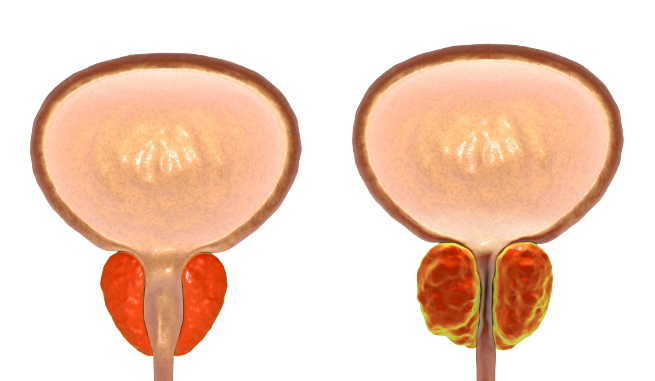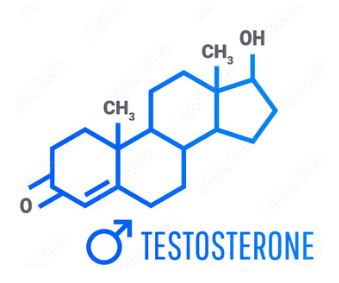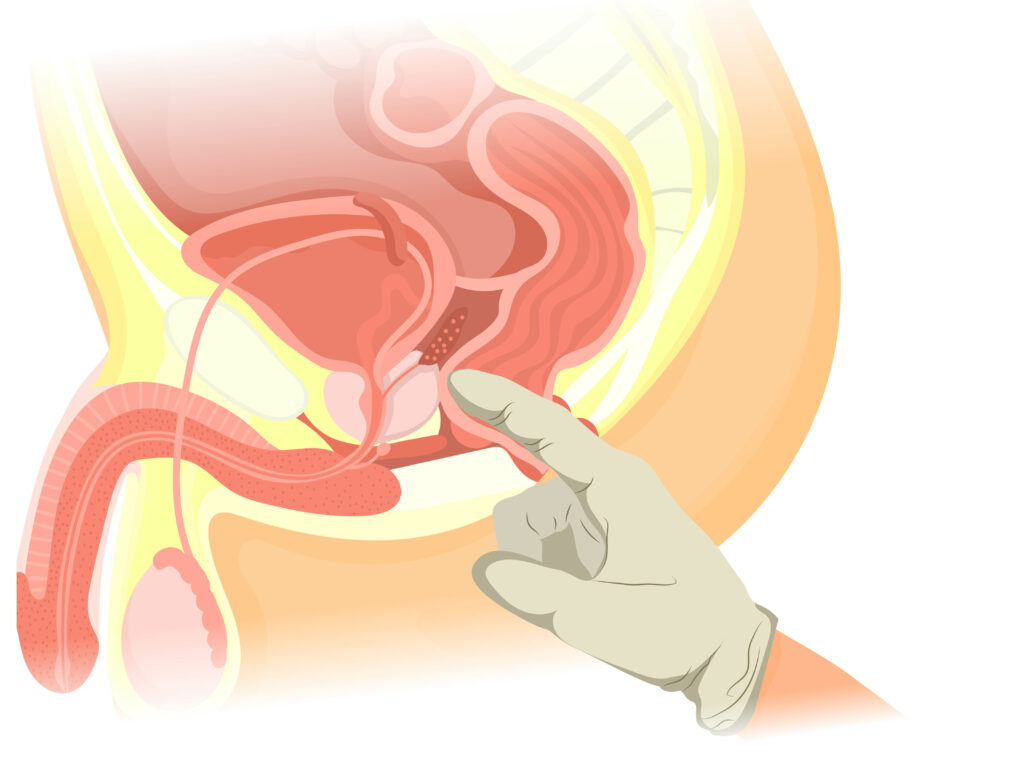BENIGN PROSTATIC HYPERPLASIA
An enlarged prostate, technically referred to as benign prostatic hyperplasia (BPH), is a benign enlargement of the prostate. It is usually manifested by difficult urination, which is caused by mechanical compression of the urethra. The essence of benign prostatic hyperplasia is a slow, inconspicuous and gradual enlargement of the prostate, which puts pressure on the bladder and urethra. This results in more frequent urination, and as the urethra becomes
increasingly narrowed, the urine remains in the bladder, accounting for urinary problems. As the word benign suggests, BPH does not indicate severe diseases like cancer or other malignancies. However, it can cause some discomfort.


Symptoms of an enlarged prostate:
- increased frequency of urination
- urgency to urinate
- frequent urination at night
- pain when urinating
- delayed start of urination
- weak and intermittent stream of urine
These symptoms tend to appear over time and may gradually worsen over the years. However, some men have an enlarged prostate that causes few or no symptoms, while other men have symptoms of BPH that later improve or stay the same. Some men are not bothered by their symptoms, while others are bothered a great deal. In a small percentage of men, untreated BPH can cause urinary retention, meaning that the man is unable to empty the bladder. The risk of urinary retention increases with age and as symptoms worsen.
Causes and Risk Factors of BPH

Age
The prostate is initially about the size of a walnut and is an organ that gradually grows throughout life. Prostate enlargement occurs with increasing age in almost all men. The first mild symptoms of an enlarged prostate can appear in men in their forties, with increasing age, the intensity of the complications increases

Hormones
The change in the hormonal balance is often noticeable as men start to get middle-age spread and lose some of their assertiveness. The body’s system for working off testosterone slows in middle age. As a result, the body reacts by using this extra testosterone for the production of Dihydrotestosterone (DHT). High levels of DHT can cause enlarged prostate tissue growth

Diet
Certain foods can encourage your body to produce hormones, ultimately causing damage to the prostate’s health. Daily consumption of red meat increases the chances of developing an enlarged prostate by 38%. Dairy is another offender. Cow’s milk is full of female hormones. Therefore, dairy products can further raise estrogen levels, upsetting your hormonal balance and increasing your production of DHT
Benign Prostatic Hyperplazia Complications
Despite its prevalence, many cases of an enlarged prostate are left undiagnosed. If left untreated, an enlarged prostate may lead to problems.
Acute Urine Retention
Acute urinary retention is a condition where a person is unable to urinate. It needs urgent treatment, as the bladder can possibly tear if it stretches beyond its capacity. The increased pressure in the bladder can also prevent urine from passing through the lower urinary tract.
Chronic Urine Retention
Chronic urine retention occurs when the bladder is unable to empty itself of urine over a long period of time. In this case, the bladder may show a massive increase. This condition may require some type of surgical procedure.
Bladder Stones
Bladder stones can occur if you are unable to empty your bladder. They are crystallized minerals in the bladder that form when urine becomes concentrated. These stones can cause bladder irritation, blood in the urine, severe infections, and blockage of urine flow.
Blood in the Urine
Blood in the urine, or hematuria, occurs when the veins on the surface of an enlarged prostate gland dilate. Gross hematuria occurs when blood in the urine is visible to the naked eye.
Urinary Tract Infection
Urinary retention can cause urine to concentrate. If the bladder can’t empty itself, bacteria will soon grow in it. In this case, urine turns darker and with a strange smell.
Bladder and kidney damage
Over time, the bladder may stretch and weaken if it cannot empty. The muscular wall of the bladder will be unable to contract normally, making it more difficult to empty itself.
Benign Prostatic Hyperplazia Diagnosis
To know if BPH or another problem is causing your symptoms, a doctor will ask you questions and perform physical examination.
So how is BPH diagnosed and evaluated?
There are more ways to BPH diagnosis and evaluation.
Digital Rectal Exam
A doctor will insert a gloved finger up the rectum of the patient to feel the size and shape of the prostate gland. This is one of the simplest and most effective procedures for detecting abnormalities like BPH in the prostate.
Prostate Biopsy
A prostate biopsy is a procedure used to detect prostate cancer. Small samples of the prostate are removed and then observed under the microscope. Doctors usually recommend a biopsy of your prostate gland based on individual findings.
Cystoscopy
A cystoscopy is a visual inspection of the prostate through a thin, lighted tube inserted into the urethra of the penis. This test is also used, though it is less common.
Blood test
A blood test to check the prostate-specific antigen (PSA) level. PSA is a protein produced by prostate cells; the PSA level may be increased in men with BPH. Men who have prostate cancer often have a highly disproportionately elevated PSA level, although prostate cancer is also found in men who do not have an elevated PSA.
Post-void residual
Postvoid residual tests the amount of urine left in your bladder after urination. It can be completed either by inserting a catheter through your urethra and into your bladder or by using an ultrasound to show images of your bladder so that your Doctor or urologist can access how much urine is there.
Prostate function and treatment

Watchful Waiting
Because the progress and complications of BPH are unpredictable, a strategy of watchful waiting – no immediate treatment is attempted – is best for those with minimal symptoms. Physician visits are needed about once per year to review the progress of symptoms.

Medications
Medication is the most common treatment for mild to moderate symptoms of prostate enlargement. It can be useful in treating BPH. However, they can come with many negative side effects and cause long-term dependency. The use of dietary supplements based on saw palmetto can be recommended.

Surgery
Sometimes BPH doesn’t respond enough to lifestyle changes, medications, or supplements. There are both minimally invasive procedures and surgical options available. Surgery is usually recommended only in case of serious complications like urinary retention, kidney damage, stones in the bladder or lots of urinary tract infections or bleeding.

Dietary supplements
Dietary supplements intended for prostate care mostly contain plant extracts that have been proven by scientific studies or traditional use to have a positive effect on the function of the prostate and urinary tract in mild or moderate cases. The truth is that prevention is way better than cure, and supplements are a better option. They are natural therapies that are much safer and more effective.
The solution is Prosteman
Prosteman contains a combination of proven natural substances that support the overall health of the prostate, maintain the proper functioning of the urinary tract and have a beneficial effect on sexual activity and performance.



